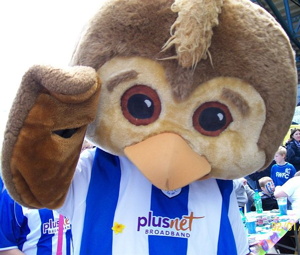 Tokens have long been used as symbols of good fortune.
Tokens have long been used as symbols of good fortune.
Whether it be a young person taking a ‘lucky’ toy into an exam with them or someone going for an operation and having a favourite cuddly toy with them for comfort, there’s an interesting history when it comes to mascots.
Such is the overwhelming nature of capitalism in football, of course, that it didn’t take long for clubs to realise that there was a marketing opportunity available to them through the use of a mascot.
From using them to get young fans hooked into the game or selling merchandise based around the mascot, their use in the game has developed significantly over the years.
Here’s some background information on it all.
Premier League Team Mascots
| Team | Mascot |
|---|---|
| AFC Bournemouth | Cherry Bear |
| Arsenal | Gunnersaurus Rex |
| Aston Villa | Hercules The Lion |
| Brentford | Buzz Bee |
| Brighton & Hove Albion | Gully the Seagull |
| Burnley FC | Bertie Bee |
| Chelsea | Stamford The Lion and Bridget The Lioness |
| Crystal Palace | Alice the Eagle and Pete the Eagle |
| Everton | Changy the Elephant |
| Fulham | Billy the Badger |
| Liverpool | Mighty Red |
| Luton Town | Happy Harry |
| Manchester City | Moonchester and Moonbeam |
| Manchester United | Fred The Red |
| Newcastle United | Monty Magpie |
| Nottingham Forest | Sherwood Bear |
| Sheffield United | Captain Blade |
| West Ham United | Bubbles the Bear and Hammerhead |
| Wolverhampton Wanderers | Wolfie and Wendy |
Other UK Club Mascots
Championship
| Team | Mascot |
|---|---|
| Birmingham City | Beau Brummie |
| Blackburn Rovers | Rover the Dog |
| Bristol City | Scrumpy the Robin |
| Cardiff City | Bartley Blue |
| Coventry City | Sky Blue Sam |
| Huddersfield Town | Terry the Terrier |
| Hull City | Roary the Tiger |
| Ipswich Town | Bluey |
| Leeds United | Lucas the Kop Kat |
| Leicester City | Filbert Fox |
| Middlesbrough | Roary the Lion |
| Millwall | Zampa the Lion |
| Norwich City | Captain Canary & Camilla Canary |
| Plymouth Argyle | Pilgrim Pete |
| Preston North End | Deepdale Duck |
| Queens Park Rangers | Jude the Cat |
| Rotherham United | Miller Bear |
| Sheffield Wednesday | Barney the Owl |
| Southampton | Super Saint and Sammy Saint |
| Stoke City | Pottermus Hippo & Pottermiss Hippo |
| Sunderland | Samson and Delilah |
| Swansea | Cyril and Cybil the Swans |
| Watford | Harry The Hornet |
| West Bromwich Albion | Baggie Bird |
League One
| Team | Mascot |
|---|---|
| Barnsley | Toby Tyke |
| Blackpool | Bloomfield Bear |
| Bolton Wanderers | Lofty the Lion |
| Bristol Rovers | Captain Gas |
| Burton Albion | Bettie Brewer & Billy Brewer |
| Cambridge United | Marvin the Moose |
| Carlisle United | Olga the Fox |
| Charlton Athletic | Floyd |
| Cheltenham Town | Whaddney the Robin |
| Derby County | Rammie |
| Exeter City | Grecian the Lion |
| Fleetwood Town | Captain Cod |
| Leyton Orient | Theo the Wyvern |
| Lincoln City | Poacher the Imp |
| Northampton Town | Clarence the Dragon |
| Oxford United | Olly the Ox and Olivia the Ox |
| Peterborough United | Peter Burrow |
| Port Vale | Boomer the Dog |
| Portsmouth | Frogmore the Frog |
| Reading | Kingsley Royal |
| Shrewsbury Town | Lenny the Lion |
| Stevenage | Boro Bear |
| Wigan Athletic | Stripey the Laticat |
| Wycombe Wanderers | Bodger |
League Two
| Team | Mascot |
|---|---|
| Accrington Stanley | Winstanley |
| AFC Wimbledon | Haydon the Womble |
| Barrow AFC | Bluey the Bluebird |
| Bradford City | Billy Bantam |
| Colchester United | Eddie the Eagle |
| Crawley Town | Reggie Red |
| Crewe Alexandra | Gresty the Lion |
| Doncaster Rovers | Donny Dog, Eric the Viking |
| Forest Green Rovers | Green Devil |
| Gillingham | Tommy T. Trewblu |
| Grimsby Town | Mighty Mariner |
| Mansfield Town | Sammy the Stag |
| MK Dons | Donnie, Mooie |
| Morecambe | Christie the Cat |
| Newport County | Spytty the Dog |
| Notts County | Mr. and Mrs. Magpie |
| Salford City FC | Billy and Babs |
| Stockport County | Vernon Bear |
| Sutton United | Jenny the Giraffe |
| Swindon Town | Rockin' Robin |
| Tranmere Rovers | Rover the Dog |
| Walsall | Swifty |
| Wrexham A.F.C | Wrex the Dragon |
Scotland
| Team | Mascot |
|---|---|
| Aberdeen | Angus the Bull |
| Celtic | Hoopy the Huddle Hound |
| Dundee | DeeWok |
| Dundee United | Terry the Terror |
| Hamilton Academical | Hammy the Hamster |
| Heart Of Midlothian | Tynie Tigers |
| Hibernian | Sunshine the Leith Lynx |
| Inverness Caledonian Thistle | InverNessie |
| Kilmarnock | Nutz the Squirrel |
| Livingston | Livi Lion |
| Motherwell | Claret, Amber |
| Partick Thistle | Kingsley |
| Queens Park FC | Harry the Hippo |
| Rangers | Broxi Bear |
| Ross County | Rosco |
| Scotland | Hampden Roary |
| St Mirren | Paisley Panda |
| St. Johnstone | Super Saint |
How Mascots Got Started
Believe it or not, football hasn’t always been the most thrilling and exciting game. Some matches are fantastic entertainment but others are, frankly, a bit rubbish. Way before mascots were chosen for the ease with which they could be turned into a plush toy for sale in team shops, some clubs decided to introduce actual animals as mascots in order to entertain the crowd and, in some cases, scare the opposition.
Real live animals were, therefore, the first mascots used in football as well as sport in general. As random as it may seem that only really started to change when the Muppets gained popularity in the 1980s. Those based in the marketing department of the top clubs realised that they could entertain people and amuse them by getting them to actually interact with the mascots. The fact that Muppets were so readily accepted meant that it was easy to develop characters that were a mix of animals and puppets.
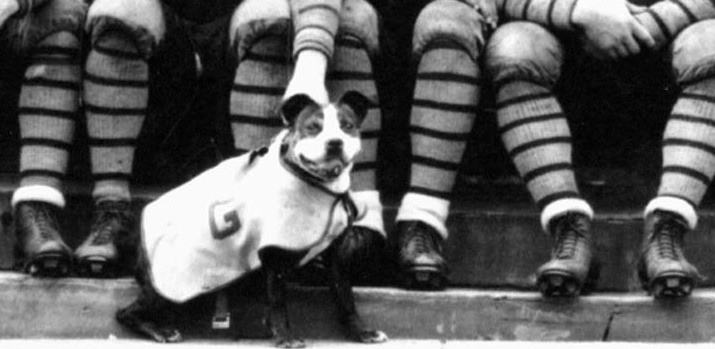
The word ‘mascot’ comes from the French word ‘Mascotte’, meaning ‘lucky charm’. Clubs had no problem connecting the notion of a mascot with their own fortune, thereby tying them into the psychology of victory. Fans were quick to buy into that idea themselves, especially when the mascot linked to something they could associate with such as a ‘fighting spirit’ or desire.
Much of what has been said there was more common for American clubs and associations. In Britain mascots tended to be humans either dressed up as animals or wearing outfits that suited the club they represented. Peterborough’s nickname is The Posh, for example, so their mascot was Mr. Posh; a man who dressed impeccably and behaved like a gentleman at all times.
It is believed that the first used of the word mascot with reference to sport was in the 1880s, when a young boy used to carry the bats of American baseball teams and run errands for the players.
Other Forms Of Mascot
In England mascots aren’t limited to animals, people dressed up or strange Muppet-like creations.
In fact it is quite common for teams to have young children dressed in the kit of the home club and another in the kit of the away club accompany the players onto the pitch.
These young children are known as mascots and often clubs will run competitions to decide who should get the honour of being one.
High-Profile Examples
Cyril the Swan
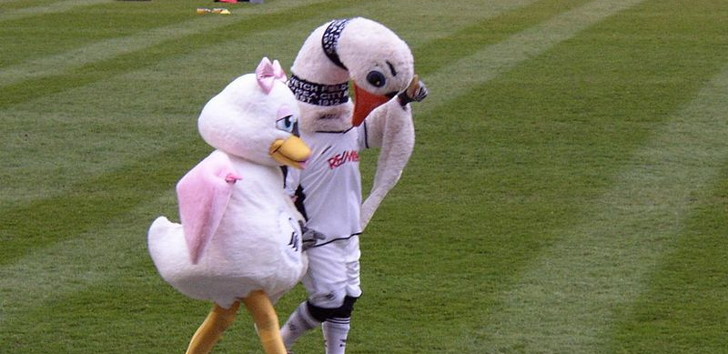
The mascot of Swansea City Football Club has won numerous awards over the years, including being voted one of the best in England by Match of the Day viewers.
He’s also been involved in some…unsuitable moments, such as when he removed the head of Millwall’s mascot before drop-kicking it.
Gunnersaurus Rex
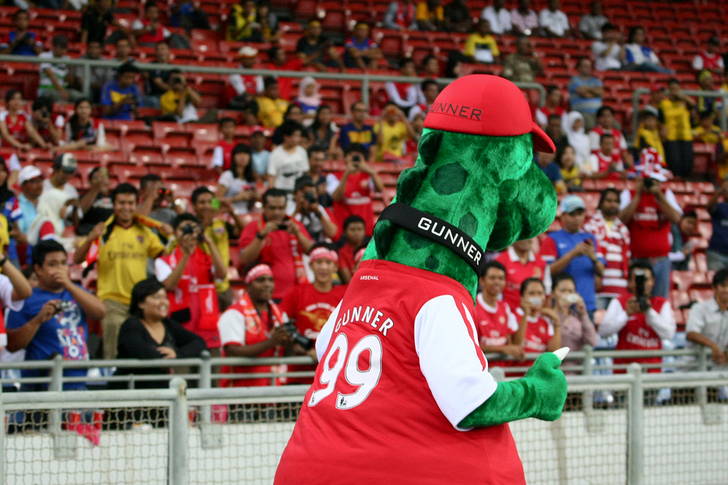
Arsenal are known as the Gunners, hence the name given to their mascot Gunnersaurus Rex. Though he looks more like a friendly, overgrown lizard than a dinosaur, Gunnersaurus has taken numerous opportunities to get involved in important moments.
The most notable of these occurred when Arsenal’s players were observing a minute’s silence and the mascot joined them in the lineup around the centre circle, head bowed.
Kingsley
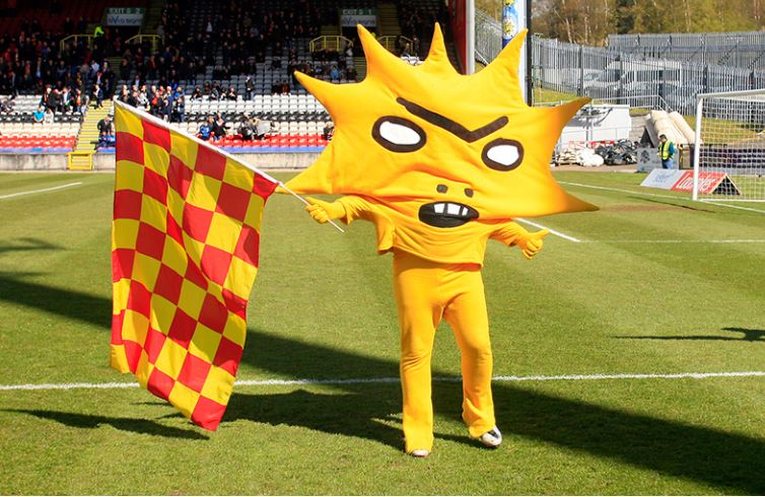
Football mascots have perhaps never been as talked about as when Partick Thistle unveiled their new one in 2015.
Designed by the Turner-prize nominated artist David Shrigley, Kingsley is the stuff of nightmares. Essentially a big star with blank eyes, buck-teeth and a monobrow, it was hoped it would ‘intimidate’ opposition teams.
Scunny Bunny
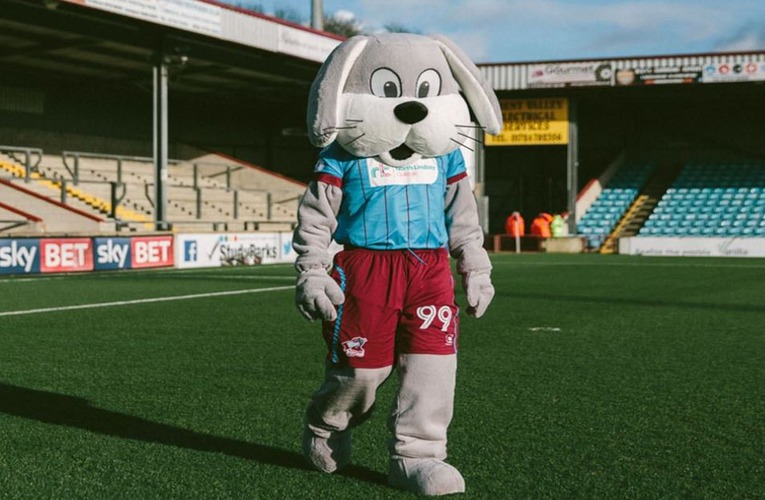
Scunthorpe’s fans once started an online petition encouraging the club to replace Scunny Bunny with ‘Iron Lion’.
It was perhaps hoped that the lion might be a bit scarier than the Scunny Bunny, which is essentially a man in a Scunthorpe kit wearing the head of a depressed rabbit.
How do the opposition teams muster the courage to get onto the pitch…
Moonchester and Moonbeam
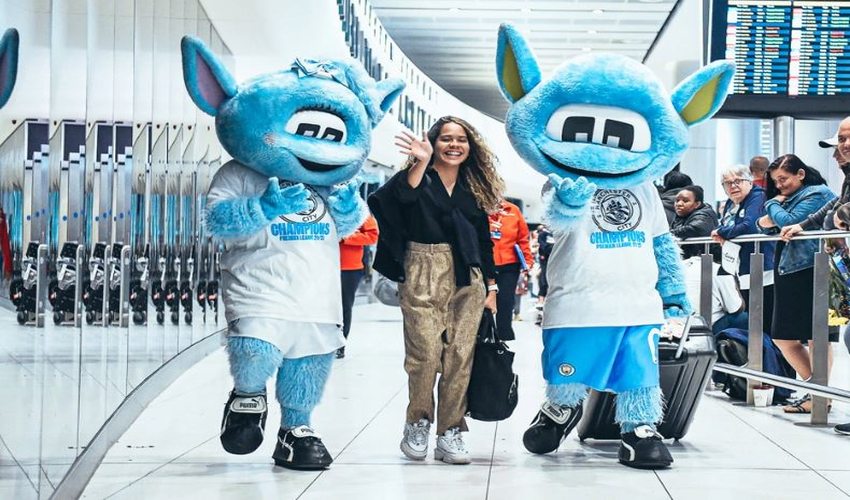
From the planet ‘Blue Moon’ come Manchester City’s two mascots, Moonchester and Moonbeam.
They’re an interesting choice of mascot for a club of Manchester City’s size and stature, though. Moonchester looks a bit dim and Moonbeam seems to want to be anywhere else.
They both just look a little bit sad at their lot in life.
Hammerhead
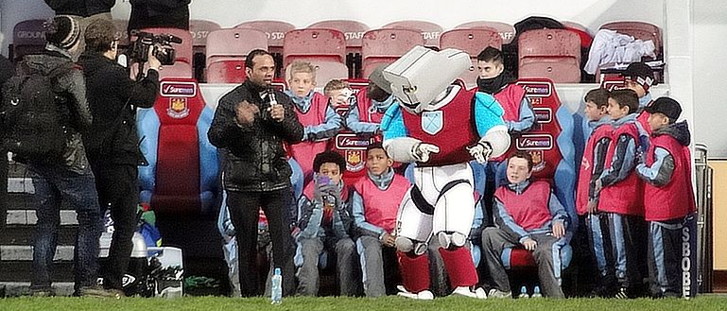
West Ham’s mascot was, according to the club’s official release on the matter, created when ‘lightening hit the ironworks’.
It actually looks like the unwanted spawn of a shark and an Iron-Man impersonator that’s absolutely furious at being pelted with bubbles every five minutes.
Jolly Green Giant
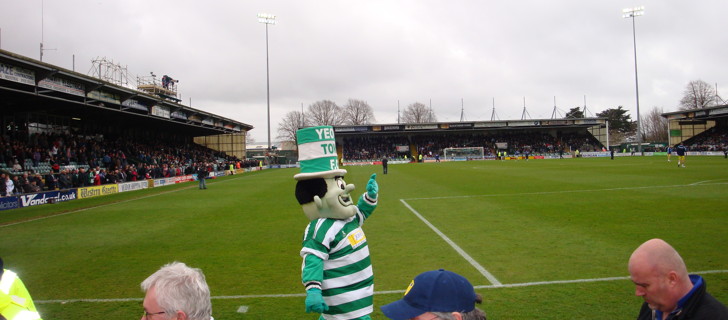
If Partick Thistle were serious about wanting to intimidate the opposition then they should have travelled to Yeovil Town and had a look at the club’s Jolly Green Giant mascot. As the name suggests, it’s tall and it’s green.
It’s made even taller by wearing a massive hat and the facial expression its displaying is halfway between scary and like he didn’t make it to the toilet on time.
Billie the Beast
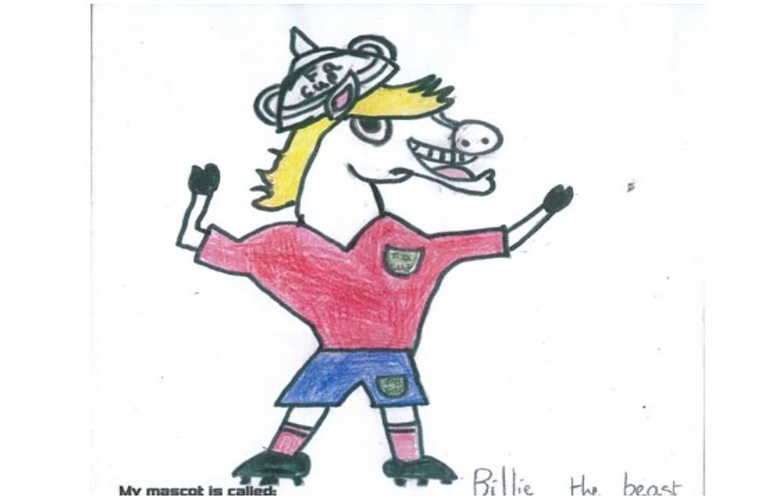
Did you know that the FA Cup had its own mascot?
When Sandy from Fife won a Blue Peter competition, her creation was made real with the invention of Billie.
Wearing the top of the FA Cup trophy as a hat, Billie has long orange hair cascading down its back, giving it the look of a psychopathic unicorn.
The Spurs Astronaut
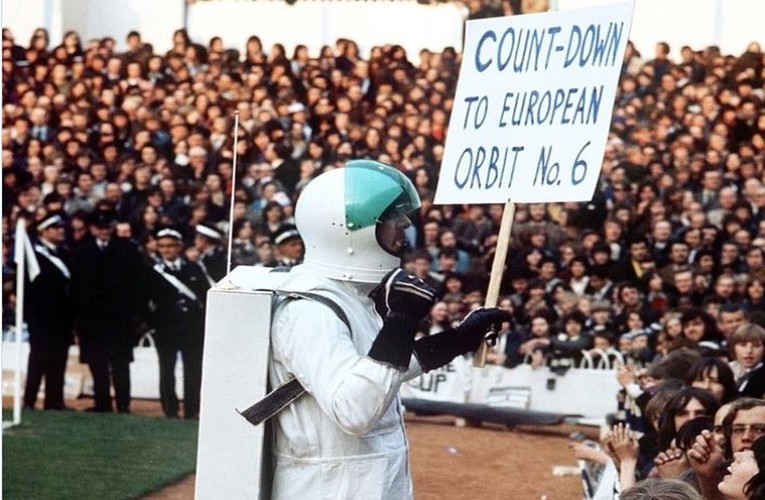
Tottenham Hotspur have a cockerel on their crest and have done for years.
Perhaps they decided it might be tricky to have a cock as a mascot, but for whatever reason, a decision was taken in the 1972-1973 reason to have a man dressed as an astronaut wander around the pitch before they played European matches.
It made perfect sense, though, because they made him carry a hand-painted sign saying “Countdown To European Orbit”… he hasn’t been since, though.
